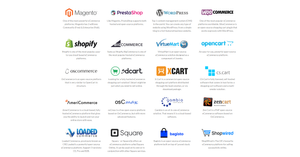7 Actionable Ways To Retarget Shopping Cart Abandoners
If you've seen the statistics, you know that just about every trend in eCommerce is pointing up.
Annual e-commerce sales are exploding each year, and the corona outbreak in 2020 has pushed online shopping to new levels.
Plus, more people are more comfortable buying online than ever before – and they're using all sorts of different devices to do it.
Basically, when it comes to eCommerce, you rarely find a statistic that isn't improving year over year.
Except for the shopping cart abandonment.
Since 2006, the percentage of users who abandon their shopping carts has increased from 59.8% to 69.2% in 2017. Which isn't a trend going in the right direction.

Brick-and-mortar store owners have always had to worry about whether or not buyers will ever return to their stores to buy.
Fortunately, in the eCommerce world, things are a bit different.
Nowadays, retailers can use effective marketing techniques to show ads to users that have added products to their shopping carts, but haven't pulled out their credit card to buy.
In this post, I'm going to explain a marketing technique that we use all the time over at Conversion Hut called retargeting, which is sometimes referred to as remarketing, depending on which platform you are using.
We'll also cover seven actionable ways that you can implement for yourself.
So without further ado, let's dive right in.
What Is Retargeting?
Let's imagine a user comes onto your website, browses a few pages, and then decides to go ahead and add an item to their shopping cart.
Then life gets in the way, and they leave your website before even entering their email address.
Retargeting is the process of showing ads to these shopping cart abandoners to encourage them to come back to your website and complete their purchase.
After all, not everyone is ready to buy right there and then. Some people will need more persuasion. For others, distractions simply arise and divert their attention elsewhere.
One crucial point to remember is that returning visitors will typically convert twice as often as new users.
So please bear this in mind: The first goal should be to actually get them back onto your website.
Different Levels of Intent
Each user who visits your website will have a different level of purchase intent.
Some will have their card out ready to buy, and others will just be getting started in the browsing phase.
The shoppers that show the highest level of intent will be your lowest hanging fruit to begin with. These are the people who, with a gentle nudge, might be heading back to your store to complete their purchases.
Building Intent-Based Audiences
To build our retargeting campaigns on the different channels available, we'll start by creating audiences.
An audience is a specific group of people that have performed our desired action.
People will typically convert differently depending on their level of intent, so it's best to build audiences around that.
That way, you will have more control over the price you're willing to pay to convert the user as well as the creative and offer being used.
Different Types Of Retargeting Ads
Now we've covered the theory behind retargeting ads, let's get into the practical side.
Google Display Remarketing Ads are set up and managed using the Google Ads interface.
There are many different options available, but to begin with, you need to focus on static banners and dynamic banners.
Static banners are when a static image is displayed to users trying to bring them back to your website:

Dynamic banners are ads that contain particular products added to the cart by the user:

You will need to do two things to get your campaign set up.
Firstly, you will need to create an audience of users that have added products to their cart but haven't purchased. We do this with Google Analytics.
Then you will need to create a campaign in Google ads and upload the ads you will show to a particular audience.
This is an excellent video on creating your audiences in Google Analytics:
Here are Google's own instructions to create your first remarketing campaign and also create a dynamic remarketing campaign.
If you use a service like Shopify, you can easily implement plugins for dynamic remarketing campaigns.
Dynamic banners work really well. Why wouldn't they? You're putting products in front of users who have already shown interest in those same products.
These are video ads that are shown to users while viewing content on Youtube.
Obviously, to utilize this type of ad, you will need to have the video content to use.
Think more about raising awareness of the value proposition for your business as opposed to the reasons people should buy from you.
Here's an example of a bumper ad that Xbox used to retarget viewers that had previously watched their long-form commercial:
If you're interested in setting these up, here's the tutorial.
RLSA
RLSA stands for Remarketing Lists For Search Ads, and these are my absolute favorite place to start with retargeting.
These work by showing text-based search ads to users related to their search queries.
Example:

We would typically create a separate campaign in Google Ads for RLSA, using much broader keywords.
This also depends on your traffic volume: It won't be productive to create a separate campaign if you don't have many shopping cart abandoners to retarget.
One final note: RLSA can be applied to both search campaigns and shopping campaigns. So if you have shopping campaigns setup, they're definitely worth testing out!
If you're interested in giving RLSA's a try, here's Google's guide.
Facebook Retargeting Ads
Facebook is still one of the best channels out there for reaching consumers.
Similar to Google Remarketing Ads, you will need to build audiences based on their engagement with your website and then create campaigns to target these users.
Check out this brilliant tutorial on configuring retargeting audiences on Facebook:
Here are some ad examples that you can use:
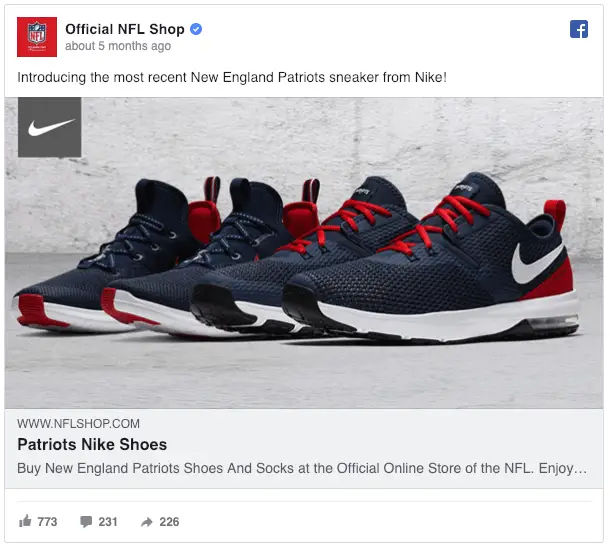
We find the use of offers works incredibly well, as demonstrated by Target:
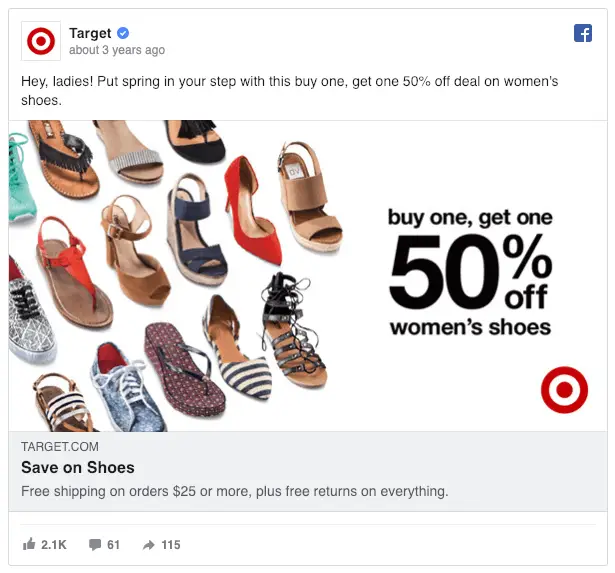
Carousel ads are the perfect way to show products that a user has already shown interest in:
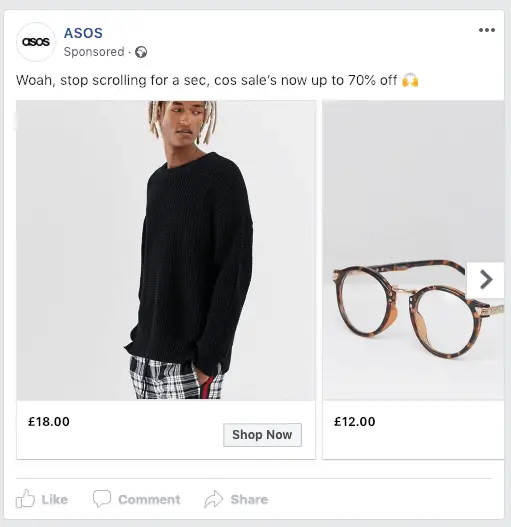
There's also the option to use video ads, as well as to retarget users.
We've found that dynamic carousel ads perform the best, but it's worth testing different options.
For eCommerce platforms like Shopify, there are quite a few plugins that you can use out of the box. Alternatively, you can do it yourself by following this guide.
Email Retargeting
According to Moz, the conversion rate for email retargeting can be as high as 41%.
Do I have your attention now?
Email retargeting is the process of collecting an email address from the user and then contacting them to try and get them to return and purchase.
This is one of my favorite tactics, and it works great.
Once users have added one or more items to their shopping cart and look as though they are about to exit the website, we'll display an exit-intent popup.
Something like the following:
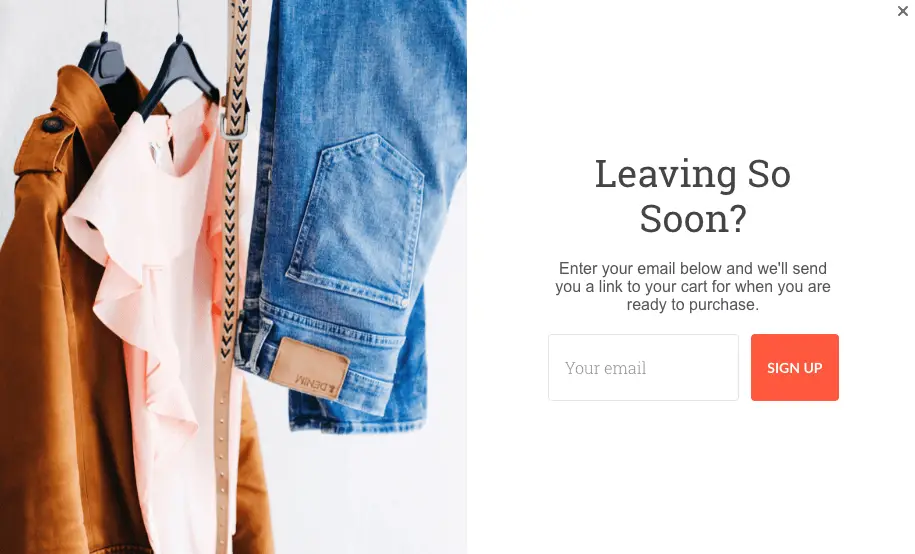
Tons of users will take you up on the offer if you are just asking for their email address.
Once we have their email address, we can drop them an email with a link to their shopping cart to come back to the site and complete their purchase.
If, after a few days, they haven't come back to the site to buy, we can send them another email. This time with a discount coupon that will expire within a set amount of time, say seven days.
Then after another seven days, we will send one final email to them as the coupon is about to expire. The email will tell them that this is the last chance to redeem their discount.
SMS
This post is going to finish strong. Because if there's one way of contacting someone with a hugely high open rate, it's mobile texts or SMS.
With current message open rates sitting at around 95 percent, there's a huge opportunity here to bring users back to your website to buy.
There's one significant requirement here, though.
Have you guessed what it is?
You'll need their mobile number.
So they'll either need to be an existing customer and therefore, a registered user on your website, or you will need to have collected it through an exit-intent popup (as discussed above).
We love this method of retargeting users because it's so direct. Thanks to the high open rate, we can pretty much guarantee that nearly all of the SMS messages that we send out will be seen by our cart abandoners. Which far increases the likelihood of them coming back to our site to buy something.
It may sound fairly complicated, but it will be worth testing to see if you can increase sales for your store.
Fortunately, if you're using a platform like Shopify, you can use several plugins that you can install and set up in minutes.
Final Thoughts
I really hope you enjoyed this post and picked up some helpful information. As much as we love retargeting, your end goal should be to increase your conversion rate so that fewer users abandon your website.
Remember to always test different messaging, channels, creative, and durations since users abandoned their shopping cart.
Try to avoid ad fatigue at all costs and happy optimizing!
Author: Drasko Georgijev
I'm a financial technology professional with 15+ years of experience in payment cards, eCommerce, transaction processing, and switching.
From time to time, I'm sharing some helpful tips, tactics, and news about Digital Commerce and Fintech.
So don't forget to share this post and subscribe to my mailing list.
Got questions? Ping me on LinkedIn.



